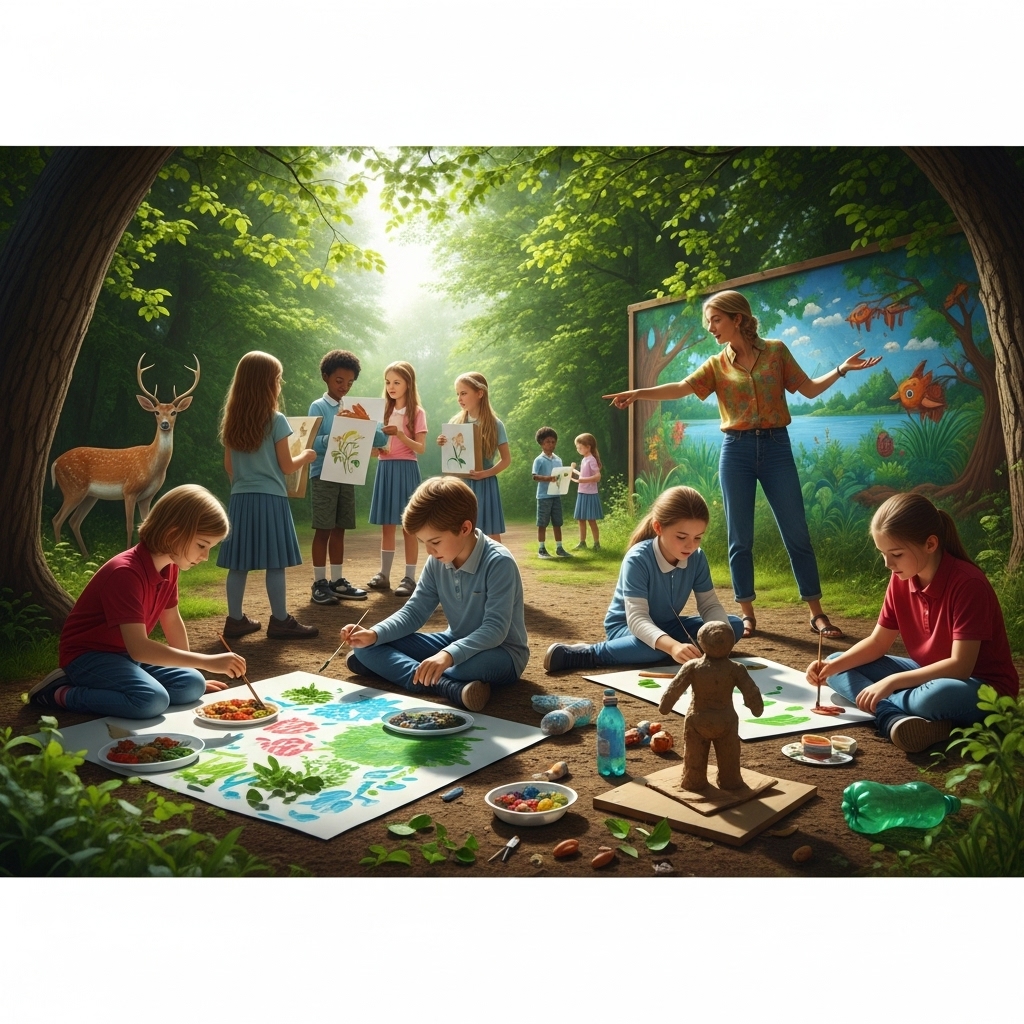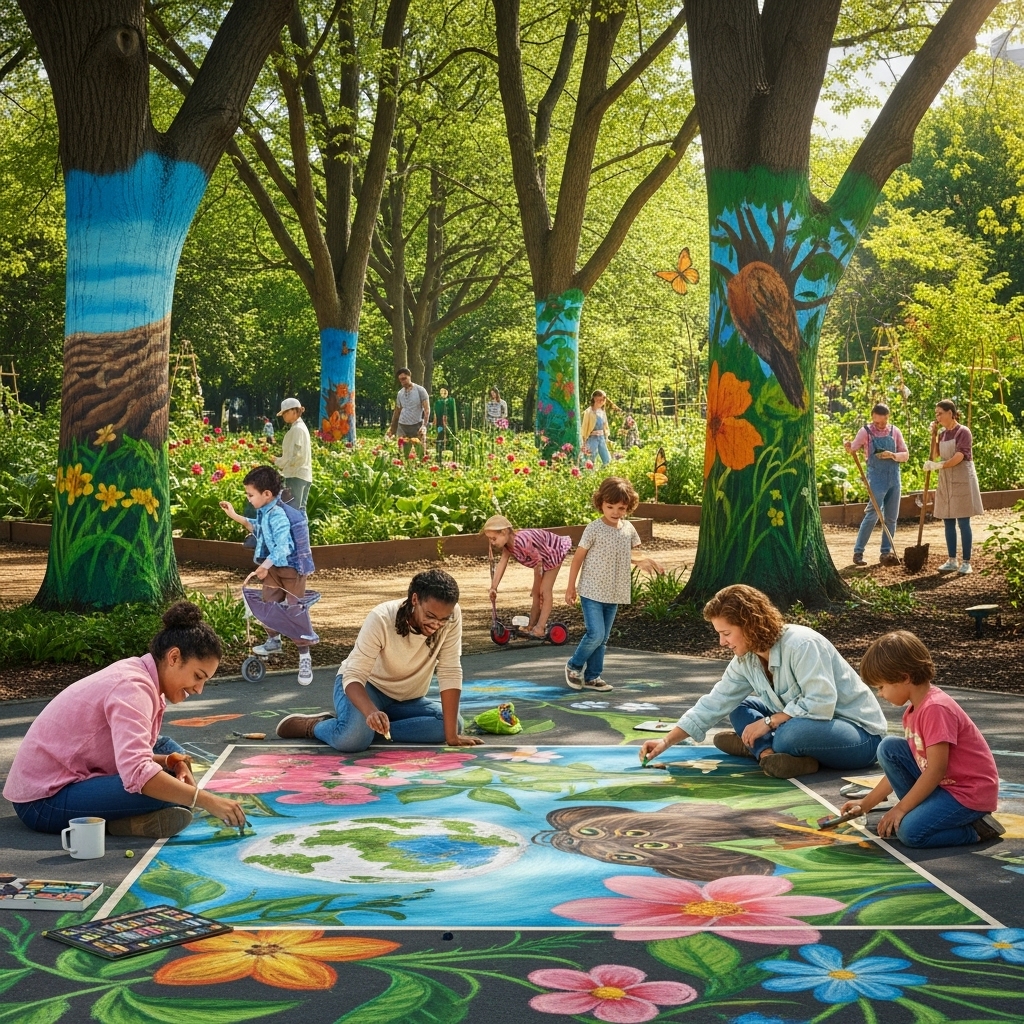Art has a unique power to inspire change, especially when it comes to protecting our planet. Through beautiful drawings and creative ideas, we can express our passion for the environment and motivate others to join the movement for sustainability.
Finding Inspiration in Nature

When I think of beautiful ‘Save the Planet’ drawings, my mind immediately wanders to the vibrant colors and intricate details found in nature. I often find that stepping outside, whether it’s a stroll through a park or a hike in the mountains, fills me with ideas that I want to capture on paper. The challenge, however, lies in translating the awe I feel into artwork that resonates with others. Nature is filled with inspiration, and I believe that every artist can find their muse in the flora and fauna around them.
Exploring Different Mediums
One of the first steps in creating impactful environmental art is to experiment with various mediums. I often start with pencil sketches to capture the outlines of a scene before moving on to more vibrant mediums like watercolors or acrylics. Recently, I’ve been experimenting with mixed media, combining photographs of landscapes with my drawings. This blend not only emphasizes the beauty of nature but also highlights the stark contrasts between untouched environments and those affected by human activity.
For instance, I created a piece where I juxtaposed a thriving coral reef with a faded photograph of a bleached reef. The fusion of these elements sparked conversations about marine conservation and the urgent need to protect our oceans. I found that using mixed media can amplify the message of environmental balance and harmony, urging viewers to consider their impact on the world.
Using Symbols and Icons
When I create art with a message, I often incorporate symbols that universally represent environmental issues. For example, the Earth, trees, water droplets, and animals are powerful icons that immediately convey a message of conservation and protection. I once created a series of illustrations featuring endangered species, using each animal’s habitat as a backdrop, which I painted in striking colors to draw attention to their plight.
Through the use of symbols, I can create a narrative within my artwork. For instance, I used a series of tree illustrations, each representing a different climate zone, to highlight the diversity of our planet’s ecosystems. By incorporating small details like animals and plants native to each region, I aimed to educate viewers about biodiversity and the importance of preserving these environments. I often find that when I simplify complex issues into visual symbols, it helps to engage viewers and ignite their passion for environmental advocacy.
Community Engagement Through Art
One of my favorite ways to inspire change is through community art projects. I’ve organized local workshops where participants, both kids and adults, can come together to create environmental art. We’ve painted murals that showcase local wildlife or created large-scale installations using recycled materials like plastic bottles and old tires. These collaborative projects not only beautify our community but also foster a sense of collective responsibility for our environment.
One memorable project involved creating a mural that depicted a vibrant underwater scene with fish, corals, and sea turtles. We invited local schools to participate, and the kids were excited to learn about marine life while contributing their creativity. The result was a stunning mural that now serves as a reminder of the importance of ocean conservation. I realized that when art becomes a community effort, it amplifies the message and reaches a wider audience, sparking discussions about sustainability and conservation.
Digital Art and Online Platforms
In today’s digital age, I’ve found that platforms like Instagram and Pinterest are fantastic for sharing environmental art and connecting with other eco-conscious artists. I frequently browse these platforms for inspiration, discovering a wealth of styles and messages that resonate with my own values. Digital art allows for endless possibilities; I can create intricate designs and share them instantly with a global audience. I often participate in online art challenges focused on environmental themes, which not only encourages me to create regularly but also connects me with a community that shares my passion for protecting the planet.
Moreover, I’ve noticed that many activists use digital art to raise awareness about pressing environmental issues. For example, I stumbled upon a series of powerful illustrations depicting the effects of climate change. These pieces were shared widely, sparking conversations and calls to action. This experience has shown me that digital platforms can amplify the reach of environmental art, making it accessible to many and encouraging collective action.
Personal Reflections and Artistic Growth
Creating art with a focus on environmental conservation has been a journey of personal growth for me. It has challenged me to think critically about my relationship with nature and the impact my choices have on the planet. Each piece I create serves as a reflection of my beliefs and values, and I hope to inspire others to cultivate a deeper connection with the environment.
As I continue to explore new styles and techniques, I’m excited to see how my art evolves. Whether it’s through painting, drawing, or digital art, I believe that every stroke of the brush or click of the mouse can contribute to a larger movement to save our planet. I encourage everyone to find their own unique way to express their love for nature, using art as a powerful tool for change. The journey of creating art for environmental advocacy is not only fulfilling but also essential in shaping a future where nature thrives and is cherished.
Art as a Form of Activism

As I dive deeper into the world of environmental art, I’ve come to see it not just as a creative outlet but also as a powerful form of activism. Each piece I create carries a message, a call to action that urges viewers to reflect on their own roles in the ecosystem. There’s something incredibly empowering about using art as a means to advocate for change, and I often find that my passion for the environment drives my artistic expression.
One of the most impactful ways I’ve utilized art as activism is by participating in exhibitions that focus on climate change and ecological issues. I remember a particular exhibit dedicated to showcasing the beauty of endangered species. My contribution was a large canvas depicting a majestic polar bear standing on a shrinking ice floe. The stark contrast between the soft fur of the bear and the harsh, cracked ice created a visual narrative that resonated with many visitors. The responses were heartfelt; people expressed their concerns and shared personal stories about their connection to wildlife. It was a reminder that art can spark conversations that lead to awareness and, ultimately, action.
Additionally, I’ve collaborated with local environmental organizations to create art for campaigns aimed at reducing plastic waste. I designed vibrant posters highlighting the impact of single-use plastics on marine life. These visuals were not only eye-catching but also served as educational tools at community events. I found it remarkable how an image could convey the urgency of an issue better than words alone. Seeing people engage with the artwork and share it on social media amplified the message beyond the walls of our local community, illustrating the power of art in activism.
Environmental Art as Education

Art serves as a profound educational tool, and I’ve witnessed firsthand how it can bridge gaps in understanding complex environmental issues. Many of my pieces aim to educate viewers about topics they might not typically engage with, such as climate change, deforestation, and pollution. I often incorporate infographics into my artwork, presenting facts and statistics alongside visuals. This combination not only captivates the eye but also informs the mind.
For example, I created a series of illustrations showcasing various ecosystems and their significance. Each piece included a brief description of the ecosystem, its threats, and what could be done to protect it. This format allowed viewers to walk away not only with a visual impression but with knowledge that could foster action. I’ve often heard from people who attended my exhibitions that they felt more compelled to learn about the environment and get involved in conservation efforts. This feedback reinforces my belief that art can empower individuals to take action and make informed choices.
Art in Public Spaces

Another avenue through which I express my environmental advocacy is through public art. Public spaces are incredible platforms for reaching a diverse audience, and I’ve had the privilege of creating installations that address environmental themes directly in the heart of the community. For instance, I worked on a large-scale mural depicting a lush forest, complete with animals and plants native to our region. This mural not only beautified a previously neglected wall but also sparked conversations about local biodiversity and conservation efforts.
There’s something transformative about public art; it can turn a mundane space into a vibrant dialogue. I often see families stopping to admire the mural, taking photos, and discussing the wildlife depicted. It’s heartwarming to witness how art can foster a sense of community while simultaneously educating and inspiring people to think about their surroundings. I believe that when art is accessible to everyone, it becomes a catalyst for change, creating a ripple effect that can lead to greater environmental stewardship.
Future Aspirations in Environmental Art
As I look toward the future, I’m filled with excitement and hope for what lies ahead in my artistic journey. I aspire to delve deeper into interactive art forms, where audiences can engage with the artwork physically and emotionally. I’ve been exploring ideas for installations that utilize recycled materials, allowing viewers to contribute to the piece. This not only promotes sustainability but also encourages a sense of ownership and responsibility for the environment. I envision projects that could transform communities, bringing people together to co-create and reflect on their environmental impact.
I also aim to expand my reach beyond local communities by exploring opportunities for international collaborations. I believe that sharing perspectives on environmental issues through art can unite us in our common goal of protecting our planet. Connecting with artists from different cultures can bring fresh ideas and approaches to environmental themes, enriching my own work and broadening my understanding of global issues. I dream of participating in international art festivals that focus on ecological conservation, where we can collectively amplify our voices and inspire action across borders.
Ultimately, my hope is to continue growing as an artist while remaining dedicated to environmental advocacy. I believe that by nurturing my creativity and harnessing the power of art, I can contribute to a movement that not only raises awareness but also fosters a deeper connection between people and nature. Through every brushstroke and piece I create, I remain committed to inspiring change and cultivating a love for our planet in others.
Final Thoughts
Art has the remarkable ability to connect us, inform us, and inspire us to take action. As I continue this journey of creating environmental art, I’m reminded of the important role we all play in advocating for our planet. Whether through personal projects, community engagement, or global collaborations, I am dedicated to using my passion for art to make a difference. I encourage you to explore your own artistic pathways and discover how you can contribute to the movement for a more sustainable world.
